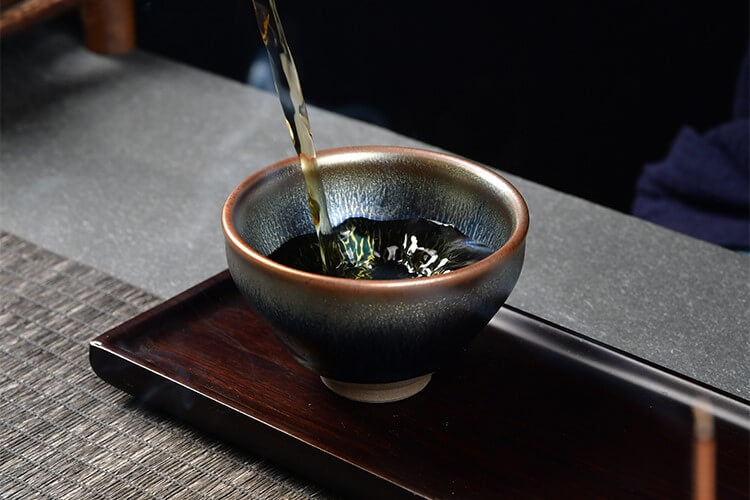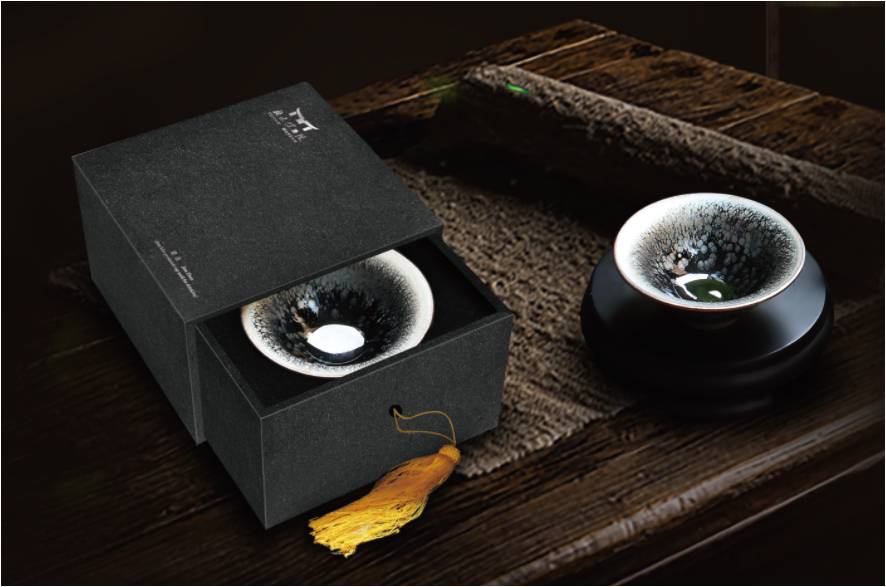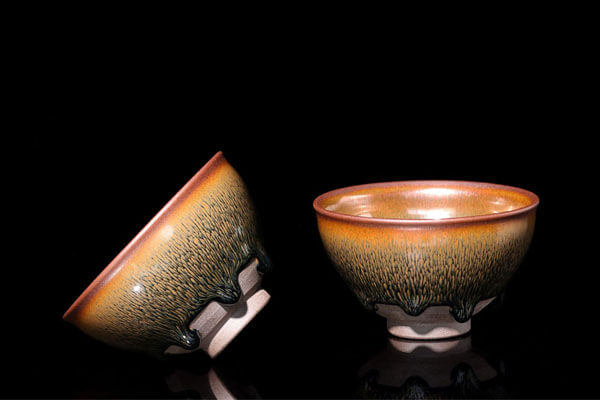The Enigmatic Artistry of Jianzhan: Shapes and Glazes
Tenmoku Jianzhan, a celebrated example of ancient crystalline glazes, is renowned for its high iron content. The interplay of kiln temperature and atmospheric conditions during firing creates unpredictable, one-of-a-kind glaze patterns. Unlike deliberate designs or carvings, these patterns emerge naturally, as if shaped by the "kiln gods," lending Jianzhan an air of mystique that has captivated scholars and artists for centuries. Typically, Jianzhan Tenmoku features a thick glaze layer with a rich, flowing texture.

The Four Classic Shapes
Jianzhan cups are characterized by their wide mouths and narrow bases, resembling funnels. Based on variations in the rim, belly, and foot, they are classified into four main types:
-
Open Mouth – The rim flares outward with a rounded lip, the belly is straight or slightly curved, and the foot is shallow. Its funnel-like shape earns it the nickname "Douli Jianzhan" (hat-shaped cup).
-
Flared Mouth – Similar to the open-mouth style but with a more pronounced outward curve at the lip, a longer belly, and a shallow foot. Large flared-mouth cups are rare and highly prized.
-
Gathered Mouth – The rim tapers inward slightly, with a short foot and a plump, rounded silhouette. Some versions feature a solid, sturdy base.
-
Tied Mouth – A distinctive Jian kiln innovation, this style includes a subtle groove (the "water injection line") about 1 cm below the rim. This functional detail helps control tea flow and prevents spills. Its gently arched belly and shallow foot make it the most iconic Jianzhan shape.
Sizes range from large (over 15 cm in diameter) to medium (11–15 cm) and small (under 11 cm), with medium and small being the most common.
The Magic of Jianzhan Glazes
Jianzhan’s glazes are formed through natural crystallization, earning them the name "natural glazes." Their patterns are impossible to replicate, varying endlessly with each firing. The glazes fall into five major categories:
-
Wujin (Dark Blue) Glaze – A classic Jian kiln glaze, recorded as early as the Song Dynasty. Ranging from lacquer-black to greenish-black or soy-brown, its understated elegance embodies simplicity. Thinner Wujin glazes often lack patterns, typical of early Jianzhan.
-
Rabbit Fur Glaze – The most iconic Jianzhan style, named for its fine, fur-like streaks. Variations include golden and silver hues due to kiln effects. Song Dynasty literati, including Emperor Huizong and poets like Su Dongpo, praised its beauty, comparing it to "jade-like patterns."
-
Oil Drop / Partridge Spot Glaze – Named for its metallic speckles resembling oil droplets or partridge feathers. Rare and challenging to produce, these glazes dazzle with gold, silver, or iridescent spots. A Southern Song Oil Drop bowl in Japan is designated a national treasure.
-
Yao Bian – The rarest and most revered glaze, featuring radiant halo-like spots that shift between blue and gold under light. Only a handful exist worldwide, with three in Japan deemed "national treasures."
-
Mottled Glaze – A diverse category including persimmon red, crimson, and soy-based hues (green, black, yellow), resulting from kiln transformations.
Jianzhan’s allure lies in its fusion of artistry and serendipity—each piece a unique testament to the alchemy of fire and earth.






